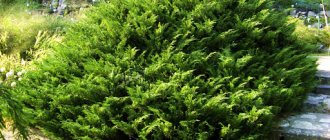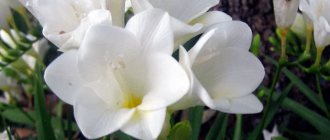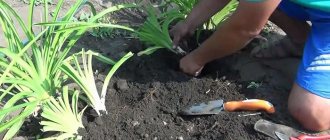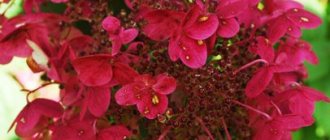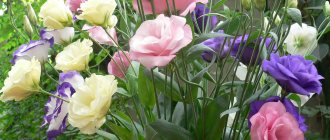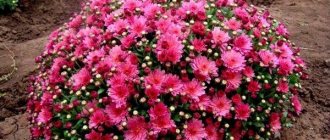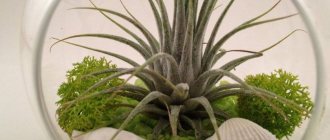In the second half or even towards the end of summer, a wide variety of chrysanthemum varieties can be seen in many gardens and flower beds. There is probably no gardener who would not love these flowers for their excellent decorative properties, as well as their relative unpretentiousness. Especially when it comes to a species such as perennial garden chrysanthemum. And yet, in order for them to delight you with their flowering year after year, certain rules must be followed. The very name of this type of flower has become so commonplace for us that few people think about its origin. However, the word "chrysanthemum" comes from two ancient Greek words, chrysos, meaning "gold", and also, anthemos, meaning "flowery". In Russian, accordingly, the name is roughly translated as “golden blossom”. After all, bright and colorful autumn flowers can be compared with the sun. In our article we will talk about growing chrysanthemum keeled with seeds
Chrysanthemum keeled description
An unpretentious cold-resistant and drought-resistant plant with a height of 35-60 cm, which will delight you with its long flowering all summer and early autumn. The inflorescences look like multi-colored umbrellas with a ring. The stems are fleshy, erect, almost hairless. The inflorescences are baskets, non-double, fragrant, rather large, 5-7 cm in diameter, on long and strong peduncles. The outermost reed flowers are yellow, white, pink or red. The leaves are slightly fleshy, doubly pinnately divided. Used for growing in groups, mixborders, near bushes, they go well with bells and yarrows. Chrysanthemums are very unpretentious, and their cultivation does not cause almost any trouble.
Kinds
An annual plant with erect, green stems, 30 to 1.2 cm in height, depending on the variety. The stems are smooth, lightly or densely covered with dense, dissected dark green foliage.
Flowering is lush and long lasting - from late spring to mid-autumn. The color of the flowers is very diverse - yellow-orange, red-yellow, brown-golden, snow-white.
Every year, breeders develop new varieties and hybrid forms of this flower crop. There are three types of annual chrysanthemums, which differ in the size and color of the flowers.
Tricolor
This group consists of medium-sized plants 60-70 cm high. The stems are green and erect. The leaf blade is pinnate, dense, green with a bluish tint.
The flowers are formed singly, with an average diameter of 4-6 cm. The last row in the inflorescence consists of petals of a single color or multi-color, which gives them a particularly rare and unique appearance.
The most popular varieties:
- Flammenspiel. A flower with red petals and a brownish-yellow core. Nordstern. Large flower with snow-white petals along the edge and a yellow-red core.
- Frosh Mischung. A multi-colored species consisting of petals of several colors.
Polevaya (Sowing)
Plants with a well-branched crown reach 40-60 cm in height. The leaf blade is pinnate from below, and toothed closer to the top.
In appearance, the flowers resemble chamomile inflorescences. The middle is flat, dark in color, bordered by snow-white, yellow or gray-yellow petals. The diameter of the inflorescences is 3-5 cm.
Of all the varieties, the most decorative ones are:
- El Dorado. The middle of the inflorescences is dark, the outer petals are canary yellow. Stern des Orients. The core is dark in color, bordered by lemon-colored petals.
- Helios. A monochromatic appearance with golden yellow petals and centers.
- Yellow Stone. Terry yellow chrysanthemum.
- John Bright. Forms bright flowers with a black core and yellow petals on the edge.
- German Flag. Multi-colored large flower with a yellow center bordered by golden tubular petals, the last row is made up of bright red petals.
- Zebra. A unique hybrid with variegated red flowers. The core is yellow-fiery in color.
Crowned (Venechnaya)
It differs from other species in its strong growth and reaches 50-100 cm in height. The shoots are erect, green, densely covered with jagged and lanceolate foliage.
The flowers are small, about 3 cm in diameter, located on long stalks, collected in inflorescences of several pieces. The core is light green, the edges are yellow.
The most popular hybrid is Tetra Comet. It is highly decorative - it blooms with large semi-double flowers of mixed colors.
Other varieties:
- Nivea. A variety with snow-white flowers and a white core.
- Primrose Gem. Produces semi-double, straw-colored flowers.
- Gol Krone with light yellow petals.
- Golden Gem. The flowers are medium-sized, about 5 cm in diameter, ocher in color.
- Orion is a yellow-flowered variety.
Maiden
It is a perennial crop, although in many regions it is cultivated as an annual. It has a compact form in the form of a bush, densely covered with dissected foliage. The color of the leaf blade is light green. Depending on the variety, double flowers are yellow or white. Popular varieties are Schneebal, Zilbiotepih, Goldbal, Double White and Virgo.
Prominent (Rotated)
It differs from other species in its intense growth force and reaches 1.2 m in height. It blooms with large double flowers, the diameter of which is 10-11 cm.
Smelly
A lushly flowering miniature bush no more than 20 cm high. It forms a large number of snow-white baskets consisting of small flowers. Exudes a pleasant floral aroma.
Choosing a place and soil for planting chrysanthemum keeled seeds
It is advisable to prepare the area where you plan to plant chrysanthemums in the fall. The place should be bright, protected from the wind by nearby plantings (or buildings). Dig up the area this fall, adding 50 grams of superphosphate and 20 grams of potassium sulfate per square meter. Chrysanthemums do not like even slight shading, as well as moisture retention in the soil, so the place for growing the plant should be as sunny as possible and slightly elevated. Flowers are suitable for neutral or slightly acidic soils with a pH of 5.5–7.
The soil for sowing seeds needs light soil; it can be prepared according to the following scheme:
- 1 part sand;
- 1 part humus;
- 2 parts leaf soil.
Diseases and pests
Among the diseases, chrysanthemum can be affected by gray rot and powdery mildew. Common causes of fungal diseases are increased soil moisture, low temperatures, and excess nitrogen fertilizers.
An external sign of powdery mildew is a whitish coating covering the entire plant. Gray rot manifests itself as brown spots, on which plaque gradually forms and a focus of rotting develops. To combat fungal diseases, use a 1% solution of Bordeaux mixture (spraying) or other copper-containing preparations.
Among the pests, annual chrysanthemums are attacked by:
Aphids can be called the main pest of chrysanthemums. It depletes the plant by sucking nutrients from the leaves. For minor infestations, aphids are collected by hand, washed off with water, or cut off along with part of the plant. If there are a lot of pests, use chemicals: Actellik, Aktara, Fitoverm (use according to instructions).
The meadow bug, like the aphid, sucks the juice from the plant. This causes white spots to appear on the leaves. Over time, the leaves turn brown and dry out, and the inflorescences become deformed. Control measures are the same as for aphids. As a folk remedy, spraying with a solution of baby shampoo is used. The external manifestation of thrips activity will be white and yellowish spots on the leaves of the flower. The fight is carried out with special drugs, for example, Actellik.
Growing chrysanthemum keeled from seeds in open ground
Annual chrysanthemums are usually grown from seeds. Cultivating flowers in open ground by seed is quite simple, but you need to take into account the biological characteristics of the plant and comply with the following requirements:
- sowing seeds in open ground is carried out in mid-May;
- sowing is carried out in depressions located 20 cm from each other and spilled abundantly with water;
- a pair of seeds are placed in each hole, which are then sprinkled with fertile soil;
- To warm the soil and maintain moisture, the crops are covered with plastic film;
- after emergence of seedlings, the film is removed and the seedlings are thinned out;
- 10 days after emergence, weeding and fertilizing with liquid fertilizers (for example, “Ideal” or “Rainbow”);
- very elongated or weakened seedlings are sprayed with a solution of “Zircon” or “Epin-Extra”.
Sowing calendars for 2021
Lunar calendar for August 2021 for gardener and vegetable gardener
Lunar calendar for May 2021 for gardener and vegetable gardener
Lunar calendar for June 2021 for gardener and vegetable gardener
Lunar sowing calendar for July 2021 for gardeners and gardeners
Diseases and pests
Usually chrysanthemums are not susceptible to serious diseases. They are mainly affected by spider mites, but using a soap solution can easily get rid of them. Instead, you can use Petherium solution . Earth parasites should also not be feared. Aphids, which can grow in the flowers themselves, do no harm and can be easily washed off with water.
Read also: Hydrangea paniculata bobo planting and care in open ground
Thus, growing from seeds and caring for chrysanthemums is quite simple. Some species can be grown both in open ground and at home. By adhering to certain recommendations, you can achieve gorgeous flowering in the fall, which will delight the eye for a long time.
Planting chrysanthemum keeled for seedlings
Seeds for seedlings are sown in a greenhouse or greenhouse in a pre-prepared earthen mixture (2 parts peat, 2 humus, 1 turf soil and 0.5 parts sand) to a depth of 1 cm. In the first 1-2 days, the ground is not watered, but sprayed from a spray bottle so that the seeds are not washed out.
When 1-2 true leaves are formed, i.e. approximately 2 weeks after sowing, the seedlings are planted (planted) according to a 4x4 cm pattern in boxes or in the ground. A week after this, they are fed with combined fertilizers (nitrophoska, ammophoska, “flower” or “vegetable” fertilizer mixture) at the rate of 10-20 g per 10 liters of water. Seedlings grown in the ground do not need to be picked. It must be thinned out, leaving one plant every 4 cm. Seedlings growing in a well-lit place at a temperature of 15-18° are strong and not elongated. Plants are planted in the ground in mid-May at a distance of 20-25 cm from one another, deepening the ball with roots and cotyledons by 1.5-2 cm. With this planting, a well-branched bush with beautiful greenery is formed. After planting, the soil is watered abundantly and mulched with peat or sawdust.
Care Tips
Annual chrysanthemums are unpretentious plants. The quality of these flowers that is very useful for gardeners is their cold resistance, the ability to withstand return frosts down to 0 °C. When choosing a landing site, we are guided by the following factors:
- maximum illumination with shelter at midday
- shelter from drafts
- good soil aeration without stagnant water
Annual chrysanthemums do not require rich soils; they prefer light, moderately fertile ones. The attitude towards lime content differs by type: for chrysanthemum keeled, its presence in the soil is beneficial, while chrysanthemum sativum, on the contrary, requires soil poor in lime.
The area where it is planned to place chrysanthemums is prepared in the fall.
They dig it up and apply mineral fertilizers: superphosphate 50 g/m2, potassium sulfate 20-30 g/m2. Depending on the needs of the selected type of flower, lime is added to the soil. Chrysanthemums grow better where manure was added 2-3 years before planting.
Caring for the flower is simple. Watering is required only in hot weather. To prevent the soil from drying out, it is useful to mulch the soil around the chrysanthemum. This will reduce the number of weeds and make maintenance easier. Fertilizers are applied 3-4 times per season, preferably in liquid form (20-30 g per 10 liters of water).
In the first half of summer, until the plant has gained strength, you need to remove weeds and carefully loosen the soil next to the flower. To ensure long flowering, faded buds are regularly plucked off. To ensure that chrysanthemums bush well, their tops are pinched. High varieties are tied up so that they do not lose their decorative effect from exposure to rain and wind.
Caring for chrysanthemum keeled
To make the flowers of chrysanthemum keeled more attractive and large, the plants need abundant watering. Occasionally loosen the soil around the plants, eliminating annoying weeds at the same time. Mulching is also beneficial for chrysanthemums. Mulch (tree bark, sawdust, peat soil, mown grass, pine needles) helps moisture stay in the soil longer, reduces the number of weeds, and prevents pathogens in the soil from reaching plants. Regular removal of fading inflorescences encourages plants to form new buds and prolongs flowering time.
https://youtu.be/9QA0LPDnrSM
Nutrition for chrysanthemums
In order to give the chrysanthemum good nutrition, I add mullein infusion to the soil after watering. During the period of active growth, the chrysanthemum's need for water is 60-70%, i.e. the soil should be moist and loose. That's why its composition is important.
In the nutrition of chrysanthemums, phosphorus promotes abundant and long-lasting flowering and increases resistance to disease. With its deficiency, growth is retarded, the leaves become smaller and hang along the stem. Using OMU fertilizer allows you to apply the entire dose at once. If you use other mineral fertilizers, then in total there should be at least three feedings per season. The need for nitrogen is also high. The fact is that with frequent watering, nitrogen easily dissolves and is transferred in the soil. Therefore, I do foliar fertilizing with nitrogen, spraying on the leaf (2 teaspoons of urea per 1 liter of water). You can use mullein for this. At the same time, there is a double benefit: feeding and protection against bacterial diseases. During budding, the need for water decreases to 25-30%, significantly decreasing towards the end of flowering.
Most popular varieties
There are six most popular varieties of keeled chrysanthemum.
- Polar Star. The garden crop is growing rapidly. The height of the stem is 70 cm. Flowering begins in the second decade of June and ends in October. Many inflorescences form on a bright green stem. The central part of the basket is purple-brown. The main shade of reed flowers is white. Closer to the disk they are red and yellow.
- Grace. The plant has a strong, fleshy stem that branches at the base. Large inflorescences form on it. The base of the terry basket is red. The color of the marginal flowers is bright yellow. Cut chrysanthemums can stand in a vase for a long time, maintaining freshness.
- Cockade. A low, branched bush that tolerates drought well. The reed flowers are white, the base is crimson.
- Dunetti. This variety belongs to the terry type. The plant begins to bloom at the end of June. The inner tubular flowers are dark red. Reed - pink, white or yellow.
- Nordstern. An unpretentious, profusely flowering plant of medium height. Flowers of this variety can often be seen in flower beds and garden beds. The main color of the reeds is white. Closer to the base - yellow.
- Rainbow Mixte (a mixture of different color combinations). The average height is 55 cm. Large inflorescences smell pleasant. The flowering period of this garden crop lasts more than three months.
- Masquerade. Mix of terry colors. The height of the branched stem is 60 cm. The plant blooms profusely from June to the second half of October. Common basket color options: chestnut center and white flowers with a yellow circle, brown disk and dark pink tongues.
Chrysanthemum Nordstern


